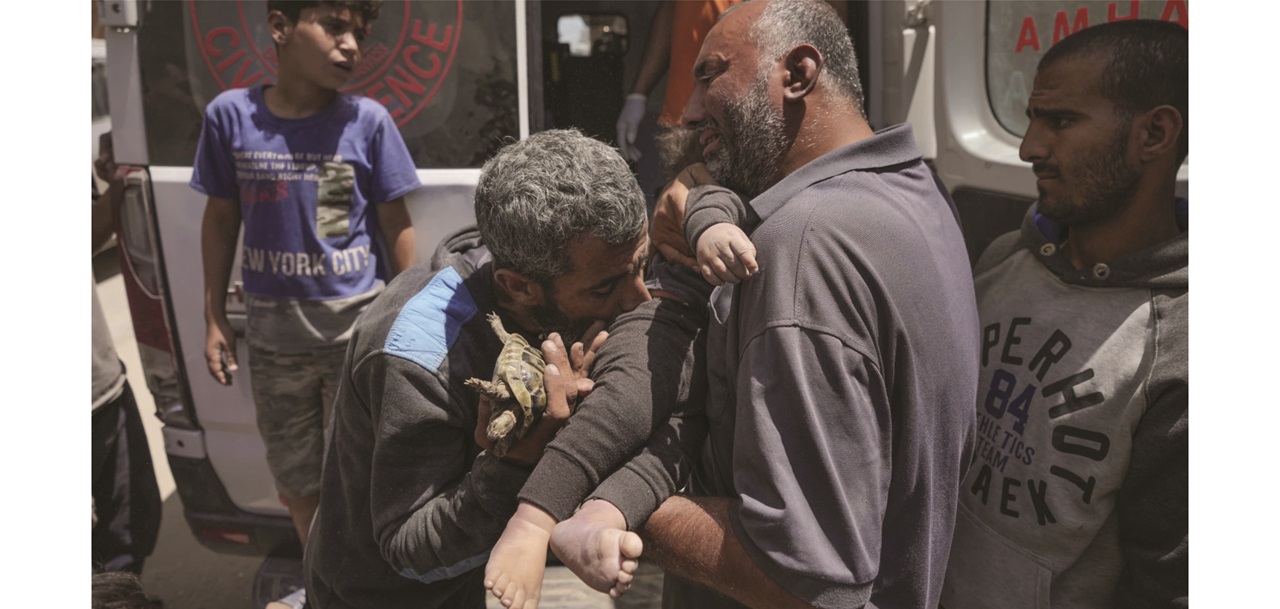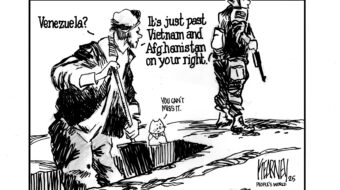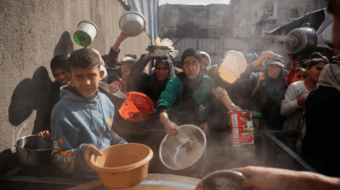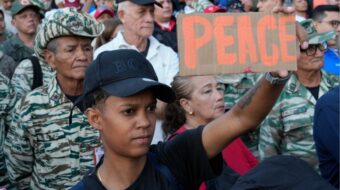
The Middle East is a region of refugees—Palestinian refugees who’ve been spread out across the lands of this part of the world for the past 76 years. Across the region Wednesday, they are marking the anniversary of their mass expulsion from what is now Israel with protests and other events. Israeli forces, meanwhile, are carrying out fresh attacks and yet another expulsion in Rafah, the last place of refuge for some 1.4 million Palestinians.
The Nakba, the Arabic word for “catastrophe,” is how Palestinians refer to the period when 700,000 of them were driven off their land by brutal force to make the creation of the State of Israel possible in 1948.
Well over twice that many have been forced to flee death inside Gaza in the latest war, which is now in its eighth month. In just the past few weeks, the United Nations says 550,000 people, nearly a quarter of Gaza’s 2.3 million people, have again been displaced as Israeli forces moved into parts of the border city of Rafah and invaded districts of northern Gaza for a second time.
Some 35,000 people, the vast majority women and children, have been killed by Israeli bombs and soldiers since Oct. 7.
“We lived through the Nakba not just once, but several times,” Umm Shadi Sheikh Khalil, who was displaced from Gaza City and now lives in a tent in the central Gaza town of Deir al-Balah, told the Associated Press.
The refugees of 1948 and their descendants number at least six million people. They live in camps in the Israeli-occupied West Bank and Gaza, as well as in Lebanon, Syria, and Jordan. Most of the residents of the Gaza Strip are from families that were forced off land that is now part of central and southern Israel.

The Israeli government rejects the Palestinians’ right of return, because if it was fully implemented, it would result in a Palestinian majority on the land they originally occupied and undermine the ethnonationalist state in Israel.
For many families in Gaza, the current Nakba is just one of many they’ve lived through. The trauma is generational, and forced expulsion seems a permanent part of life for Palestinians.
Today’s Nakba
Permanently pushing Palestinians out of Gaza has been confirmed as the preferred policy option of the Israeli Intelligence Ministry. A document leaked in late October 2023 and published by local Israeli news outlet Sicha Mekomit revealed a plan to send Gaza residents fleeing into the desert of Egypt’s Sinai Peninsula, never to return.
Dated Oct. 13, the secret deportation directive outlined four stages, several of which have already been executed.
First, all Palestinian civilians would be vacated from northern Gaza in advance of Israeli Defense Forces (IDF) ground operations. This was sold to the world as an effort to avoid unnecessary civilian casualties while the military targeted Hamas.
Second, the IDF was to begin a sequence of land assaults moving from north to south down the Gaza Strip. In conjunction with sustained airstrikes, the ground campaign would physically clear Palestinians, basically bulldozing people off the land. This was achieved, at the cost of tens of thousands of Palestinian lives.
Third, all routes out of Gaza—except the Rafah border crossing into Egypt—were to be kept tightly sealed, leaving Palestinians only one way to escape destruction. “It is important to leave the traffic lanes towards the south usable, to allow the evacuation of the civilian population towards Rafah,” the ministry told the cabinet at the time. Most Gazans are now in Rafah, with nowhere left to run.
Fourth, if Egypt can be convinced to take the Palestinians, the Intelligence Ministry said the Israeli government would construct tent cities in the northern Sinai desert and eventually build whole cities to permanently resettle the people that had been expelled from their homes and land. Thus far in the war, the Egyptian government’s refusal to accept refugees has upset the full implementation of this phase, but the IDF pressed Gazans right up against the border as part of the execution.
The Intelligence Ministry recommended creating “a sterile zone of several kilometers inside Egypt and not allow the population to return to activity or residence near the Israeli border”—a forever no-man’s land.
The authors of the policy document said it is absolutely necessary to “motivate” Palestinians to agree to leave and give up their lands via a sustained propaganda effort. “The messages should revolve around the loss of the land, making clear that there is no longer any hope of returning to the territories that Israel will occupy in the near future,” the plan said.
A region of refugees

In the camps in other countries, the genocidal destruction of Gaza and its residents has revived memories from earlier rounds of Israeli military violence over the decades.
In Lebanon, at an elderly residents center in the Shatila refugee camp near Beirut, Amina Taher told an AP reporter about the day in 1948 when her family’s home in the village of Deir al-Qassi collapsed over their heads after being bombed by Israeli forces. Her hometown was absorbed by the new state and is situated in what is now northern Israel.
Then 3-years-old, Taher was pulled from the rubble unharmed. Her 1-year-old sister, however, was killed. Though she is relatively safer in Lebanon, she has watched the same scenes she lived through as a child play out again in Gaza over the past weeks and months.
“When I would watch the news, I had a mental breakdown because I remembered when the house fell on me,” she said. “What harm did these children do to get killed like this?”
Daoud Nasser, also living in the Shatila camp, was 6-years-old when his family fled from Balad al-Sheikh, a village near the city of Haifa. Before the borders were reinforced, his father tried to return shortly after 1948 but found a Jewish family living in their house.
Nasser said he would attempt to return again himself if the border were not so heavily guarded. “I would run. I’m ready to walk from here to there and sleep under the olive trees on my own land,” he said.
This article features reporting from the Associated Press.
We hope you appreciated this article. At People’s World, we believe news and information should be free and accessible to all, but we need your help. Our journalism is free of corporate influence and paywalls because we are totally reader-supported. Only you, our readers and supporters, make this possible. If you enjoy reading People’s World and the stories we bring you, please support our work by donating or becoming a monthly sustainer today. Thank you!










